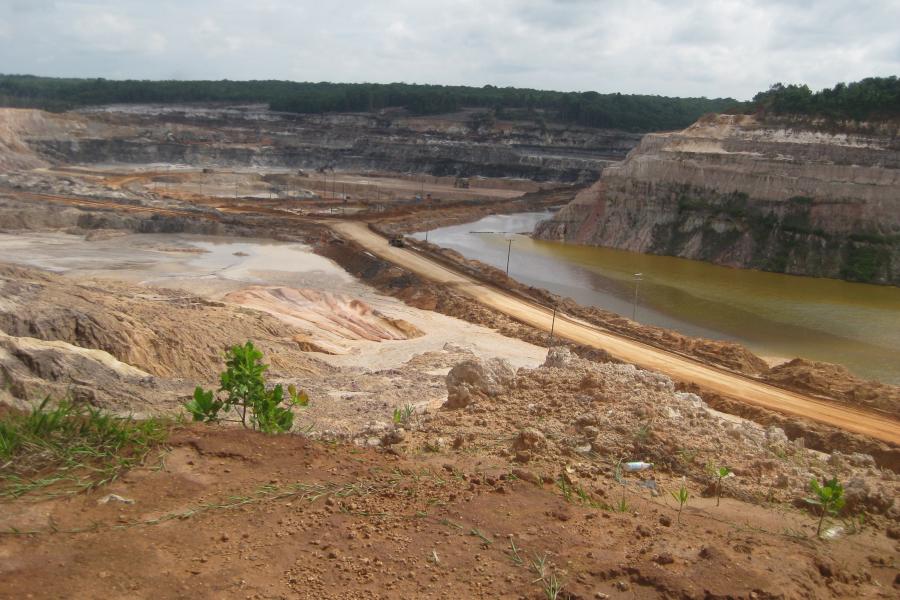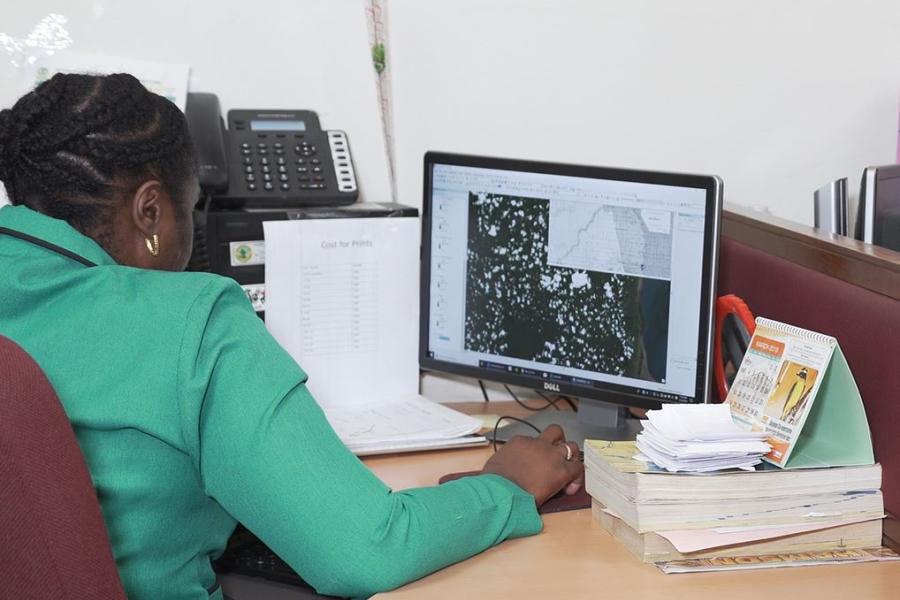Mainstreaming Sustainable Land Development and Management (SLDM) Project in Guyana
21 May 2021
- Prioritizing Sustainable Land Management (SLM) as a tool for development in Guyana
In a rapidly changing world pressured by climate change and increasing populations, sustainable land management (SLM) is vital for development. It can help to improve livelihoods, achieve food security and protect ecosystems while ensuring that land, as an important resource, is also sustained for the benefit of future generations.
SLM includes technologies, policies and activities that allow the use of land resources – including soils, water, animals and plants – to produce goods that meet changing human needs, while ensuring the resources maintain productivity and environmental functions. For example, it may involve countries developing coherent policies and institutional framework that govern use and development of land. SLM is also supported through knowledge sharing and lessons learnt to scale up good land management practices including among land users. SLM recognizes that interaction between land resources, climate and human activities influence productivity and sustainability of land-use systems.
Globally and nationally, SLM remains a priority with partners like the Food and Agriculture Organization of the United Nations (FAO) actively involved in assisting member countries to create enabling environment for sustainable development of land resources to meet the ever-increasing needs and demands of the world’s rapidly growing population and as a means for achieving Food Security for All (SDG 2).
With regards to Sustainable Development Goals (SDG), SLM is also linked to SDG 15: “Protect, restore and promote sustainable use of terrestrial ecosystems, sustainably manage forests, combat desertification, and halt and reverse land degradation and halt biodiversity loss.” More so, SLM is important to achieving SDG Target 15.3: “By 2030, combat desertification, restore degraded land and soil, including land affected by desertification, drought and floods, and strive to achieve a land degradation-neutral world.” While it is recognized that all forms of land degradation cannot be stopped, it can be offset by improved management of land for agriculture, pastoral systems, forestry, and mining.

GLSC and its role in sustainable land management
Countries like Guyana, whose socio-economic development has traditionally relied on land-based activities, mainly agriculture, mining and forestry, are recognized for their commitment and strategic actions to integrate SLM. Guyana is currently implementing a Project to Mainstream Sustainable Land Development and Management (SLDM) aimed at creating an enabling environment to promote sustainable, and climate-resilient land development, management and reclamation. The Guyana Lands and Surveys Commission (GLSC) is the national implementing counterpart and a main beneficiary of the SLDM Project.
FAO is the implementing agency with overall responsibility for executing the project, in collaboration with GLSC.
Mandated by the GLSC Act of 1999, “to have charge of and act as guardian over (all) public lands, rivers and creeks of Guyana,” the Commission has legal support in its functions of land administration and management in Guyana. Affirmed in GLSC’s functions, is responsibility for land use planning and land administration which contributes to sustainable land management. Land use planning involves the allocation of land for uses that provides the greatest sustainable benefits. Land administration refers to the process of determining, recording and disseminating information about the rights, regulations, value and uses of land when implementing land management for agriculture, forestry, mineral extraction, conservation, tourism and urban development. The GLSC enables land users the rights to access lands for different purposes/land uses such as agriculture, residential, commercial, industrial, grazing, recreational, ecclesiastical (religious) and tourism.
The SLDM project, which started in 2018, is carrying out several activities to improve GLSC’s capacity and workflows for improved land administration and land use planning, building on land monitoring, surveying, valuation, mapping, etc. These entail application and use of updated equipment, technology, tools and systems and capacity building through training, formal and otherwise, for GLSC staff and other partner agencies.

SLM and combating land degradation
Overall, project outcomes seek to mainstream SLDM in policy and institutional and governance mechanisms to prevent degradation and restore degraded lands; and to boost Guyana’s institutional and human capacity for participatory and cohesive SLDM activities. The project also targets improvement of local governance in three (3) regions to implement and scale up SLM interventions
The SLDM project is supporting Guyana to achieve its goals and objectives for land use planning and development, reclamation, combating land degradation and SLM. These are activities linked to national strategies including the Low Carbon Development Strategy (LCDS) and framework for Reducing Emissions from Deforestation and Degradation (REDD+). The project is also assisting Guyana to meet its commitments to international obligations on land management matters. Included in these are Guyana’s commitment to the United Nations Convention to Combat Desertification (UNCCD) and achieving Land Degradation Neutrality (LDN).
GLSC is Guyana’s National Focal Point agency to UNCCD with oversight for implementing measures to achieve LDN. The fundamental aim of LDN is to preserve the land resource base, by ensuring no net loss of healthy and productive land, at national level. This goal is to be achieved through a combination of measures that avoid, reduce and reverse land degradation. Achieving LDN requires estimating the likely cumulative impacts of land use and land management decisions, and counterbalancing anticipated losses through strategically-planned rehabilitation or restoration of degraded land, within the same land type.
Natural resource utilization and increasing settlement expansion are some factors contributing to land degradation in Guyana. UNCCD global data has shown Guyana’s area of degraded land to be 0.003%.
GLSC is engaged in transformative projects at the national and regional levels to reduce land degradation. As a part of a multi-country initiative with eight (8) other Caribbean states, Guyana would soon implement a SOILCARE Project.




